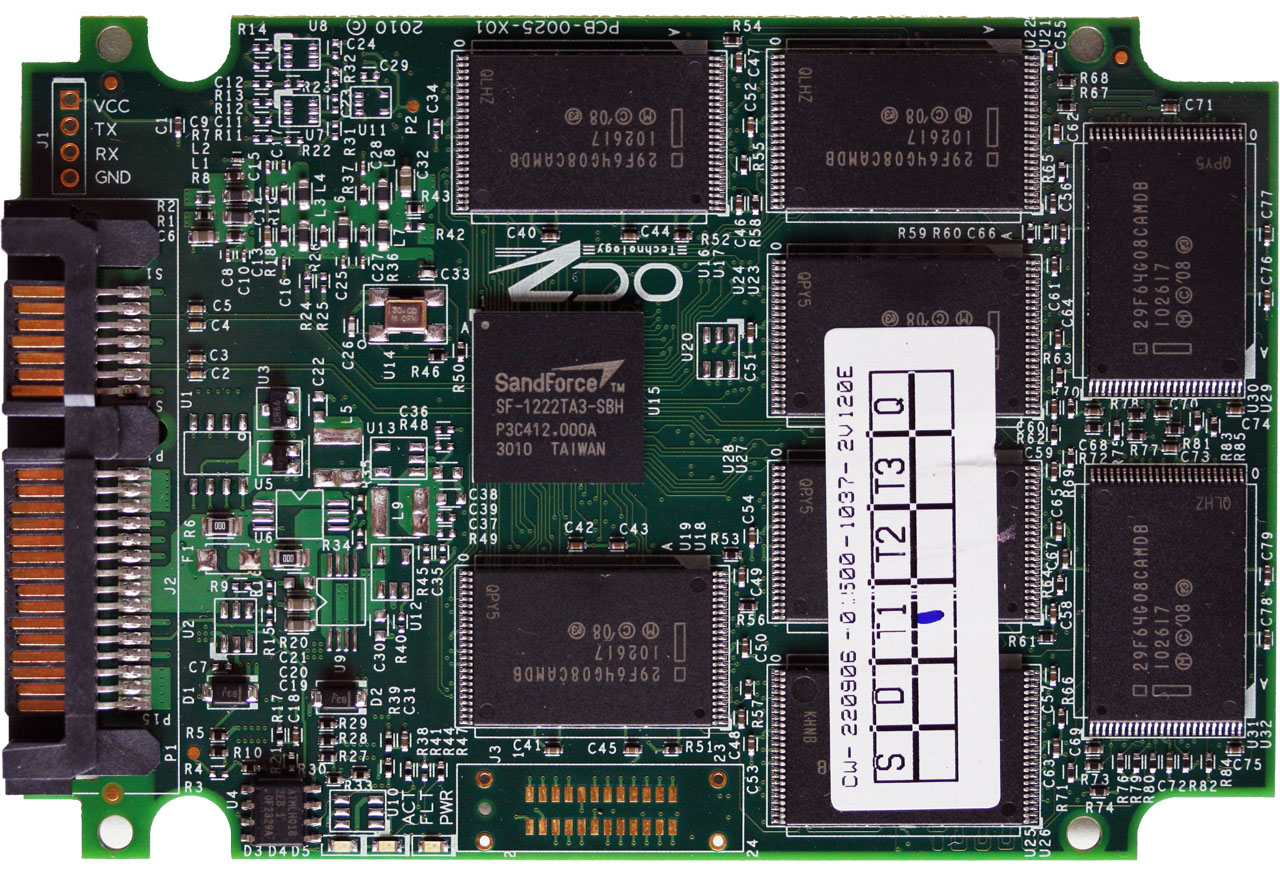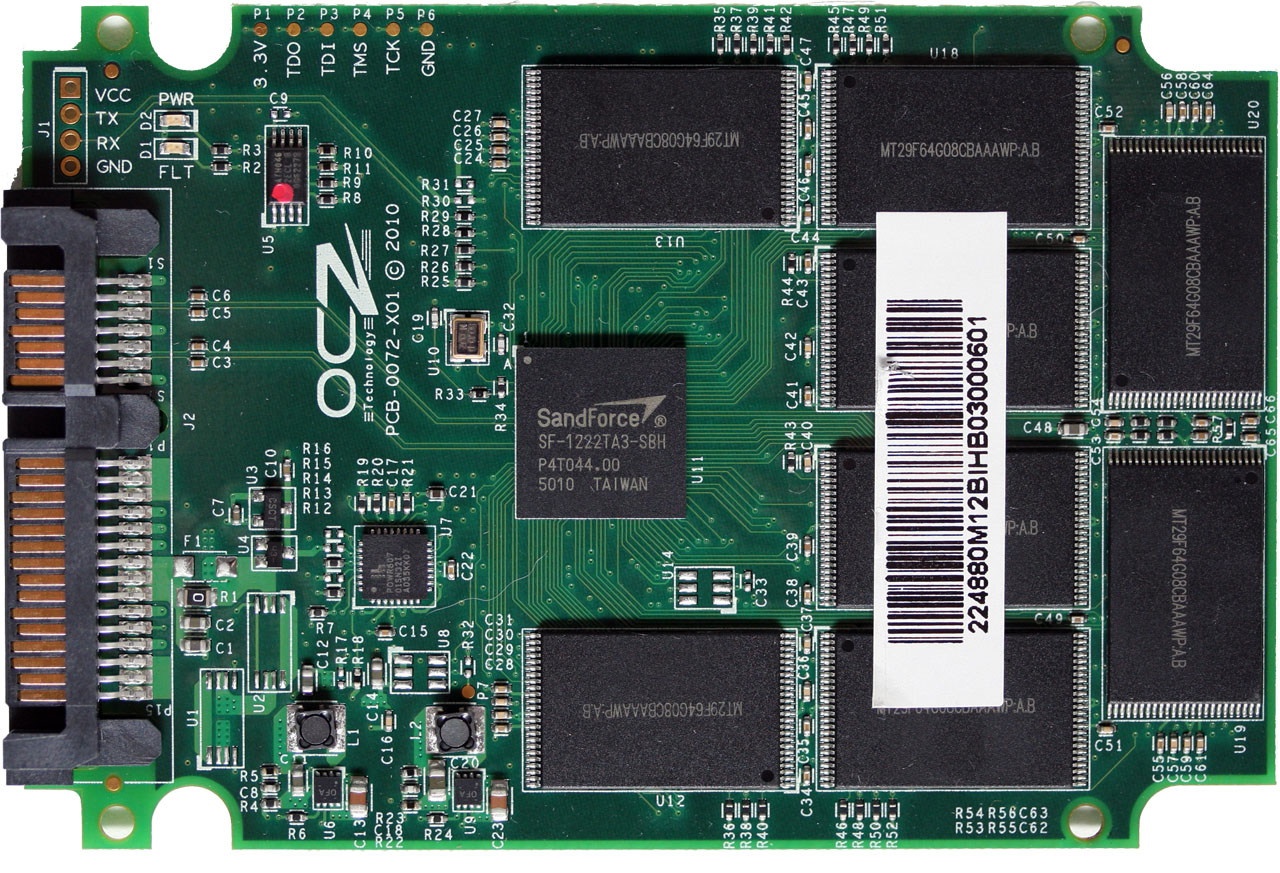The OCZ Vertex 2 Conspiracy: Lost Space, Lost Speed?
Several readers contacted me in the past two weeks, complaining about OCZ's recent adoption of 25 nm NAND and its effect on the capacity and performance of certain SSDs that they expected to be both larger and faster. I bought my own drives to compare.
Lost Capacity: Defining And Explaining The Scope
There are two fundamental issues to explore here: lower capacity and reduced performance.
Capacity is easiest to address, so I’ll do that first. OCZ says that it is going 25 nm across its product line to bring costs down. But the entire lineup isn’t being affected capacity-wise. According to OCZ, only the 120 GB and 60 GB models are affected (note that our contact at OCZ in Europe says the 90 GB drives are affected as well, though OCZ's US office has not confirmed this)—it says it isn’t shifting to 25 nm on the 40 GB drives, and SSDs in excess of 120 GB don’t give up capacity because they already have enough leftover space to address the root cause of this whole brouhaha, which I’ll explain in more depth. Even more specifically, only the E-series drives are affected (OCZSSD2-2VTXE120G). It just so happens that I had a drive with the E firmware, and that’s what I also found on Newegg.
The E in that model name actually stands for Extended. At one time, all Vertex 2s employed 28% overprovisioning. E-versions facilitate less overprovisioning. Now, if you look at the following table, that seems like a counter-intuitive claim. According to OCZ, resellers haven’t been receptive to adopting new part numbers as these drives have changed. So, the E has really lost its original meaning.
| Header Cell - Column 0 | IDEMA Capacity | Raw Flash Capacity | Windows Capacity |
|---|---|---|---|
| OCZSSD2-2VTXE60G | 55 GB | 64 GB | 51.22 GiB |
| OCZSSD2-2VTXE120G | 115 GB | 128 GB | 107.10 GiB |
| OCZSSD2-2VTX60G | 60 GB | 64 GB | 55.87 GiB |
| OCZSSD2-2VTX120G | 120 GB | 128 GB | 111.75 GiB |
I keep using the word “affected.” What does affected actually mean? With 64 Gb, 25 nm memory ICs onboard, more space has to be dedicated to SandForce’s Redundant Array of Independent Silicon Elements technology, which is tasked with improving reliability even in the face of block failures. That’s why you see lower capacities on the 120 and 60 GB models.
Why the bigger concession for RAISE? Currently, it’s being claimed that OCZ is setting aside more space for potentially bad blocks due to the 25 nm geometry. Twenty-five nanometer NAND has a harder time maintaining its structure than 34 nm NAND, so you get fewer write cycles out of it. SandForce skirts the issue by simply giving the controller more room to set aside blocks that eventually go bad. In reality, OCZ is actually forced to set aside more space as an artifact of the new 64 Gb ICs. Since full (now larger) bit planes are used for RAISE, shifting from 32 Gb to 64 Gb creates that discrepancy in capacity by inherently allocating more space per die to RAISE. According to OCZ, there is no functional difference in the uncorrectable bit error rate in moving to 25 nm. It simply is what it is.
But add up the fact that OCZ’s E-series drives were intended to squeeze down overprovisioning and the increased spare space set aside for ECC on 25 nm-based SSDs and you have a recipe for lower capacities. This is easily illustrated with my OCZSSD2-2VTXE120G. The first drive I received, based on 34 nm NAND, gave me 111.8 GiB (120 GB) of usable space. The second drive (exact same model number on Newegg) dropped to 107.1 GiB (115 GB).
Now, if you paid $250 for 111.8 GiB, you were paying about $2.23/GiB. If you pay $230 for 107.1 GiB, you’re paying $2.14/GiB. During a recent chat with Ryan Petersen, OCZ’s CEO, he noted that the shift to 25 nm is intended to lower the prices on SSDs, since the devices themselves cost less. Based on today’s pricing, Ryan’s reasoning holds up—we are, in fact seeing more aggressive prices.
Get Tom's Hardware's best news and in-depth reviews, straight to your inbox.
But what if you bought one of the new drives last month when they transitioned, but prices hadn’t yet adjusted? Even more importantly, what if you had a 34 nm 120 GB Vertex 2 and now want to add a second drive in RAID 0 without mismatching the capacities? Certain customers are right to be upset about a capacity change unaccompanied by a SKU adjustment.
For those folks, OCZ is offering to swap out 25 nm drives with 64 Gb NAND for drives with 32 Gb NAND, which reverses the capacity loss. At first, it was asking that customers pay the difference in NAND costs. I didn’t like that plan much because the potential was there to penalize customers who bought the new version legitimately hoping to match it up to an old drive in RAID, only to discover its divergent specs, or even the customers who read a review of the 34 nm NAND-based drive and expected the same ~112 GB to show up. Now, OCZ is stepping up to offer the swap at no charge, which we applaud.
Current page: Lost Capacity: Defining And Explaining The Scope
Prev Page Is There A Problem Here, Sir? Next Page Lost Performance: Not Just A Figment Of Your Imagination-
Mushkin.com have a letter posted on the website that they will not be going to 25nm as the drives life cycle is less than half that of a 3*nm drive. Also the performance is not there.Reply
-
cangelini LeekayMushkin.com have a letter posted on the website that they will not be going to 25nm as the drives life cycle is less than half that of a 3*nm drive. Also the performance is not there.Reply
Depending on supply of 34 nm NAND, that's probably not a sustainable position to take. IMFT isn't going to decide to shift back to 34 nm.
At the risk of contradicting myself, Intel will be using 34 nm NAND on its next-gen 6 Gb/s Elmcrest drives. It's not like the flash isn't disappearing entirely, but the vendors making the switch seem to be motivated largely by cost-cutting reasons. -
Nicely done Mr. Angelini; however, I still think OCZ pulled a nasty car-salesman tactic on their newest 25 nm NAND SSD products, and as such will be looking elsewhere to purchase any future SSD. Blaming resellers or other sources for the SKU is an incompetent way of deflecting fault and has made them look even more silly.Reply
-
cangelini Thanks radiovan. Like I mentioned in the story, we'll have to see if companies like Corsair and Patriot are able to get their upcoming renamed SKUs onto Newegg, Tigerdirect, Zipzoom, etc.Reply -
1.29 Firmware....how nice... pity that ocz only documents 1.28 for the moment.Reply
And then again why not update the 25nm to 1.29 too?
But I guess consistency is not always wished when trying to demonstrate something -
nebun binoyskiOk, but when will we be able to buy ssd's that are $100 @ 1TB capacity?in about 10 years or so....that's a very big maybeReply -
yose3 binoyskiOk, but when will we be able to buy ssd's that are $100 @ 1TB capacity?Reply
when you throw a shoes to bush again meaby lol
-
Reynod It is all about profit.Reply
The real reason is that going to cheaper flash with a 3000 cycle life to reduce the total cost of production (and therefore increase profit) means ... increasing the amount of redundant memory to replace the flash that dies due to wear ... and that process means better error correction is required to achieve that ... therefore performance is effected.
Chris ... I got it into one sentence ... albeit a horrible one.
Nice article mate.


